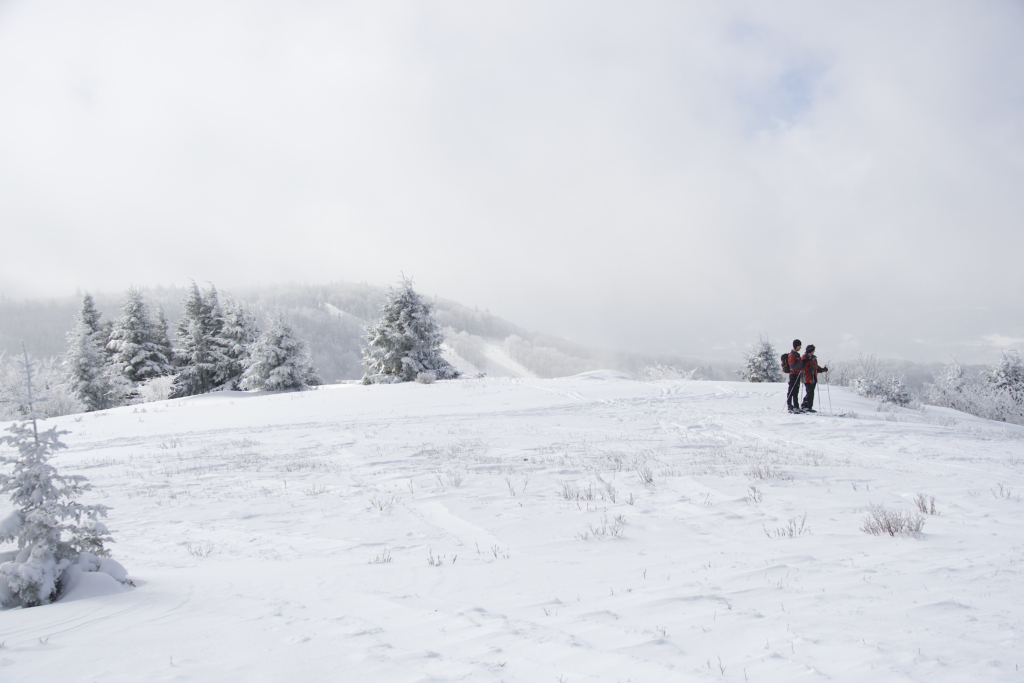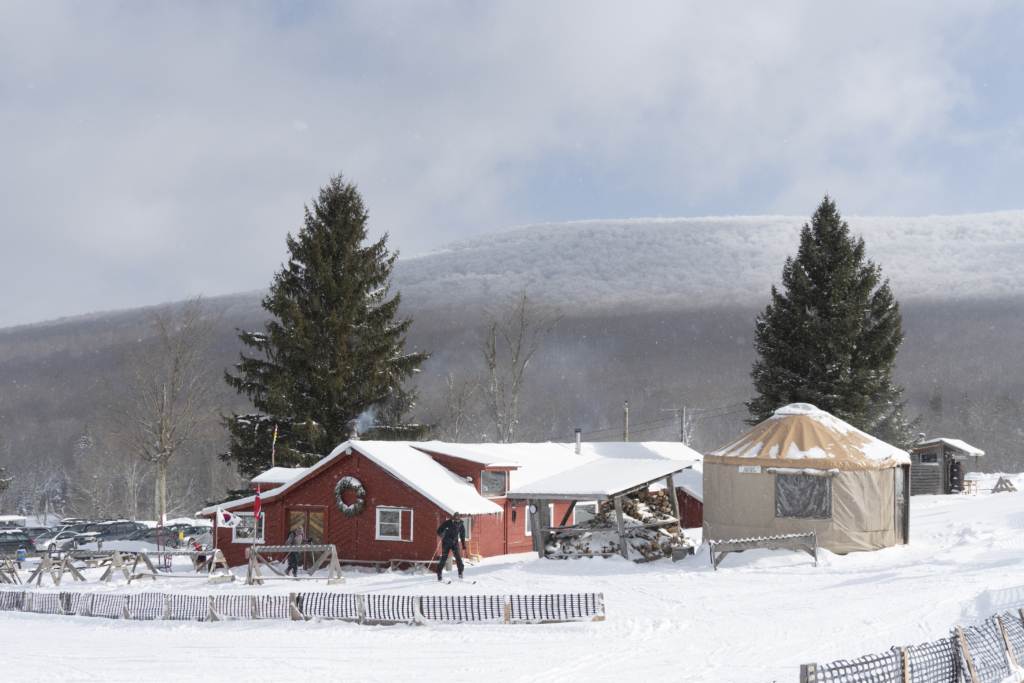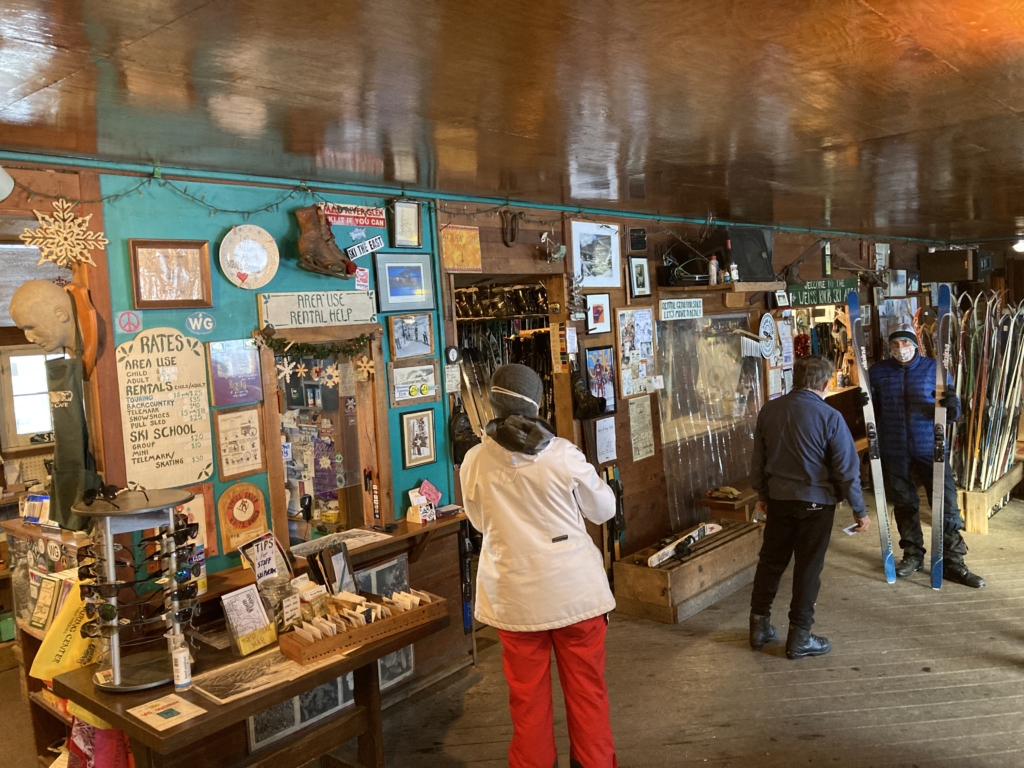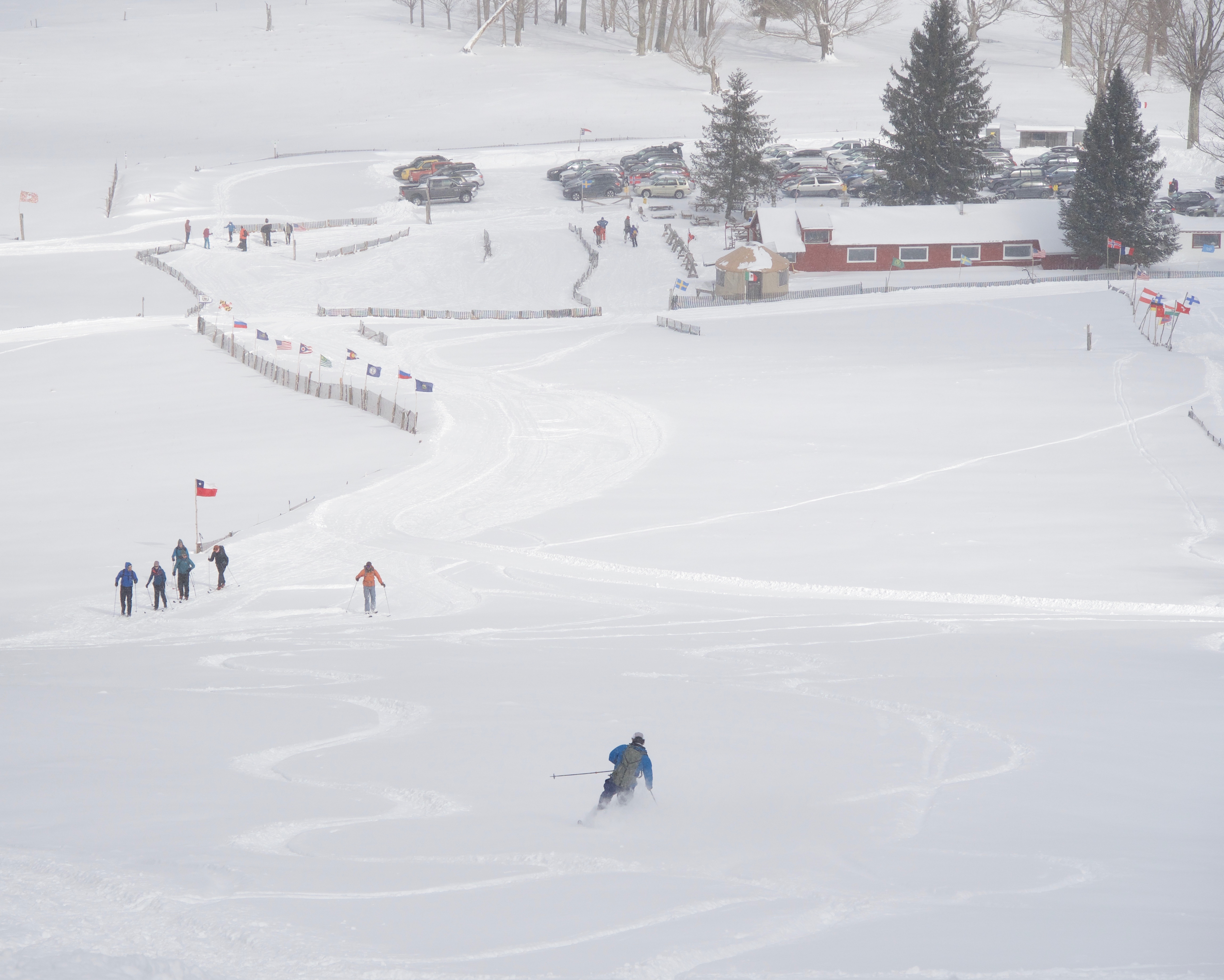This article appeared originally in The Washington Post
Chip Chase is wrong on this one.
“There’s no snow culture in West Virginia,” he tells me as we chat, masked up, in the shotgun, wooden lodge of White Grass Ski Touring Center, which Chase founded in 1981 and has run since. “I wish I could rewrite history and have a bunch of Norwegians settle here.”
Okay, so maybe the locals in this rugged, scenic pocket of Appalachia, 11 miles from the town of Davis, aren’t delivering the mail on cross-country skis. But there is in fact one heck of a snow culture here, and Chase, 67, is its epicenter. He’s a lithe, 5-foot-6 weather system clad in a thin ski jacket, winter pants, work boots and a hippie-knit beanie who will riff on anything, and usually many things at once, tied together by the common theme that life, people, nature, hard work and skiing are awesome, especially when rolled into one.
I’ve come here in early February at the tail end of a storm cycle that dropped 20 inches over four days, and the culture, judging by my early read, is out in force.
“Best conditions in seven years!” says Dylan Jones as we methodically slide our skis up the sideline of a wide-open slope, a remnant of this area’s former life as the lift-served Weiss Knob ski area. The lodge, which dates to 1959, is another remnant. It’s 18 degrees but feels much colder thanks to a rifling northwest wind and an army of sun-blotting clouds racing overhead.
Jones is here with his wife, Nikki Forrester, and friends for the same reason I am: to trudge merrily uphill — on skis designed for both ascending and descending — for many minutes so that we can blast back down in seconds, and repeat.
And White Grass is well suited to that ambition, with 2,500 acres of terrain spanning more than 1,200 vertical feet. This includes three prominent crests — Roundtop, Bald Knob and Weiss Knob — and more than 30 miles of marked trails, 15 miles of which are regularly groomed.
Nordic and backcountry skiing have exploded in popularity nationwide during the covid-19 pandemic, for obvious reasons: Both are relatively low-cost outdoor activities that almost require social distancing, and donning a face mask in subfreezing conditions isn’t a lot to ask. Then there’s the natural beauty: White Grass, for example, sits amid tens of thousands of acres of wilderness, state park and National Wildlife Refuge, and between two lift-served ski areas, Timberline Mountain and Canaan Valley Resort.

I split from Jones and his crew at a decaying mid-station of an old rope tow — which, legend holds, was pulled by the rear axle of a hearse that Weiss Knob founder Bob Barton had driven up there — and continue ascending along a marked trail in a forest of balsam fir, red spruce, sugar maple and birch. I shuffle past evergreens laden with snow and hardwoods glazed in hoar frost. The trees creak in the wind, the air smells of purity, and my eyes jump among the beckoning billows of untracked powder. I can’t imagine being much happier.
When I reach Roundtop, 625 vertical feet above the lodge, I peel the climbing skins off my skis, click back into my bindings and take a silken line into the glades. The visuals, snow quality and, for a brief moment, even the pitch of the slope are downright Coloradan.
“White Grass is basically a backcountry ski area,” Chase had told me, “founded by mountain powder skiers.” That might raise eyebrows among the legions who come to kick and glide along the undulating double-track trails, or to the first-timers taking lessons in front of the lodge. And in fairness, Chase embraces them all, as evidenced by the fact that many of the skiers I meet — regardless of their gear — claim to know him well. He is the hyperkinetic, beneficent godfather of freed-heel skiing the Canaan Valley. When I first arrived and asked a staff member how I’d recognize him, she replied, “He’s short. And buzzing.”
Chase came here in 1980 after trying to sustain a Nordic center through two distressingly short winters in the Shenandoah Mountains. The old Weiss Knob acreage, which in summer is a black angus cattle farm, made perfect sense for Chase’s dream: It sits on the Allegheny Plateau, beneath a ring of peaks that trap storm clouds and, although it’s been a while since the valley hit its historic annual average of 160 inches, it still snows a lot here, especially compared to other Mid-Atlantic ski hills. White Grass also benefits from the area’s prevailing northwest winds, which transfer oodles of snow from low ground onto the mountains. In fact, the first ski area in this valley, Driftland, opened in 1951 on a massive, recurring snowdrift, reportedly so deep that it often lingered into summer.

One reason for the New England-style winters is geography: West Virginia has the highest mean elevation — 1,500 feet — of any state east of the Mississippi River. As Barton wrote in a 1976 letter to a friend, “There is literally nothing but air between Weiss Knob and the North Pole,” a claim that actually appears to be true. That grants Arctic weather, along with gales spinning off the Great Lakes, unimpeded access to the West Virginia highlands. Barton also noted in his letter that the area, in a post-Civil War survey, was dubbed the “Canadian Valley” because of both the climate and the high concentration of far-north flora and fauna.
To be clear, the weather here is fickle, with winter rain and long droughts between snowfalls increasingly common. Which is why Chase is proud of his ability “to get people skiing on a one-inch base.” To maximize skiable days, he positions short plastic fences strategically to collect drifting snow, which he redistributes and grooms in a beginners’ zone called the snow farm.
But in a winter like the one we’re having — 95 inches and counting, as of Feb. 17 — that’s hardly necessary. On my second lap of the day up I head for Bald Knob, 4,843 feet above sea level. I emerge from the forest into a sunny meadow of snow-topped laurels, then skate into the buffeting wind to the edge of the knob, which commands a view of the sparsely developed valley and Route 32 running like a shot arrow toward Davis. A hand-carved sign points me to the Bald Knob shelter, one of 10 three-walled resting spots that Chase and his crew have built across White Grass. A few have wood stoves, all have snacks (check the ammo boxes) and at least one may or may not have a stash of local moonshine tucked behind a faded tapestry (BYO cup).
At the shelter I meet Mark Neubauer, a longtime grasser who came up for the day from Williamsport, Md. “I love this place,” he tells me. “The whole peace, love and happiness vibe. I start checking their website in September to see if it’s started snowing yet.” He’s referring to the lively yet serious forecasts posted by White Grass’s dedicated meteorologist, the Fearless One — who, incidentally, was the only one among many I checked to accurately foretell the near-hurricane-strength gusts and blowing snow I drove through the prior night to get here.
I get the same vibe as Neubauer: Everyone I meet, from the little kids to the gray elders of the trail, is beaming, friendly and free with advice, as though I’ve schussed onto some ascending coil to heaven.
The Friends of Whitegrass Ski Touring Facebook group is similarly buoyant, featuring on any given day photos of on-site fun, cross-country skiing memes, bourbon cocktail recipes and panda videos. One recent post, “Had the best day at Whitegrass” drew the response, “It’s never a bad day at WG!”

Much of this speaks to the general goodness of simply being outdoors in a pretty place with a mission — to get up, down or across whatever’s in front of you. But a lot is also no doubt because of what Chase and his community have cultivated. From midmorning to dusk people cluster around the fire pits outside the lodge, eating, drinking and laughing.
“You have to treat the customer like gold, because that’s what they are,” Chase says. “There’s nothing better than helping people.” He pauses, his eyes searching for his next thought. “It’s hard keeping this place going but I love seasonal work. Here today, gone tomorrow. Makes life special.”
There’s 1,000 vertical feet of barely disturbed powder between the Bald Knob shelter and the lodge, but having come this far, I’m determined to press on to Weiss Knob. Thirty minutes later I reach that summit, and its vista into Canaan Valley ski resort, the adjacent Dolly Sods wilderness and the rising shoulder of 4,770-foot Mount Porte Crayon, the fourth-highest peak in the state.
I ski two laps down an untracked cut above a buried gas line before following a telemark shredder into the trees for a final shot off Weiss Knob. En route back to the base, following a tip, I veer from the established tracks in search of powder-filled bowl. But after an hour of slogging — alone, fatigued, hungry and dehydrated — I take the first established trail I find back toward Roundtop. After one final bomb though the glades, I recover with a sweet potato and bean burrito and an IPA to go from the White Grass cafe, then head off to find Chase.
He’s behind the lodge, gazing up the main slope in the dying light when a surge of joy washes over him. “Just look at those layers of skiers!” I follow his eyes from a family on the lower section to a trio of skiers by the old rope tow shack and, farther up, silhouetted high on Roundtop, two more. Chase is buzzing, with what I can only assume is renewed wonder at this nirvana he’s nurtured for 40 years. “Isn’t that awesome?”
The question is rhetorical, of course, and Chip Chase is right.

Comments